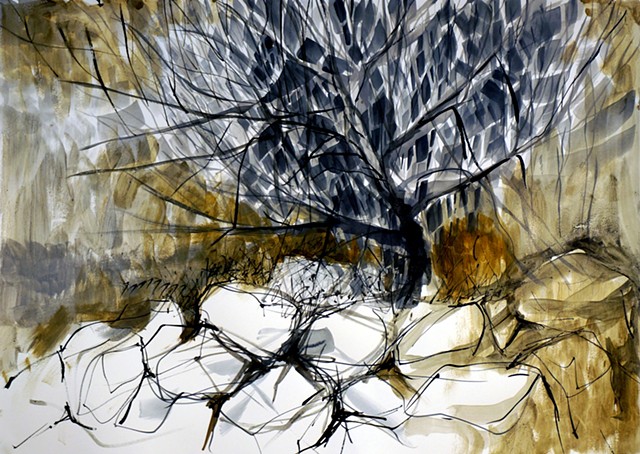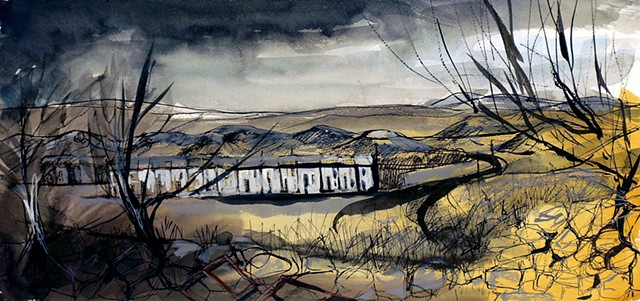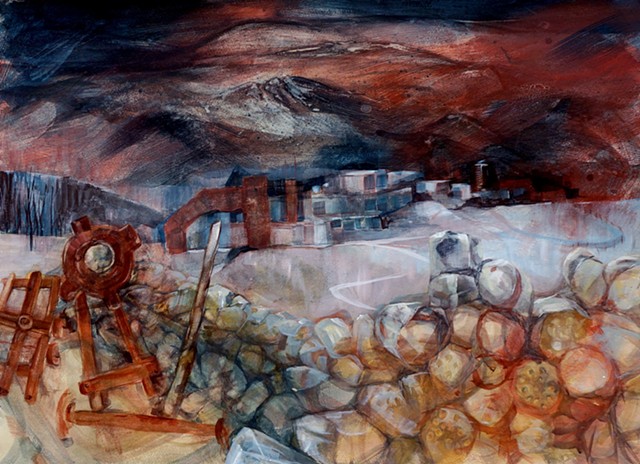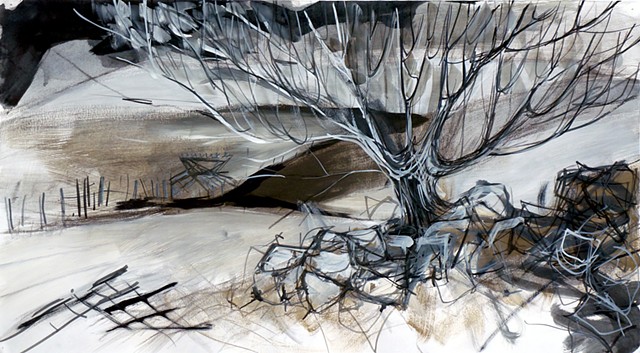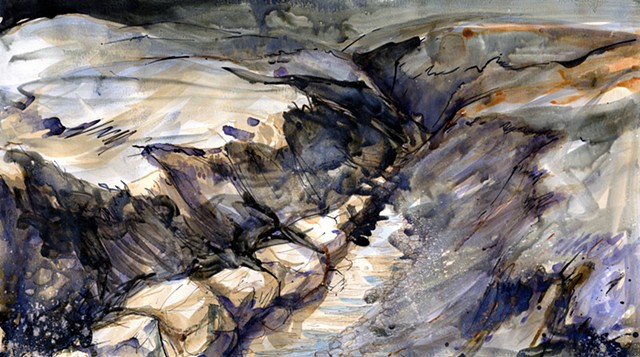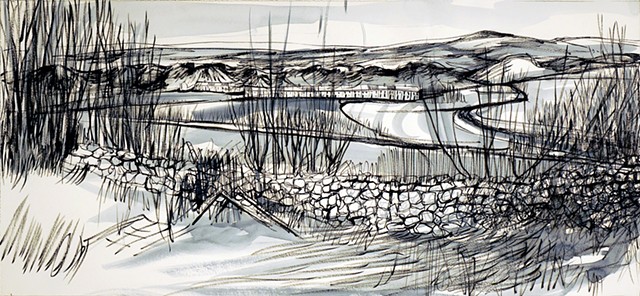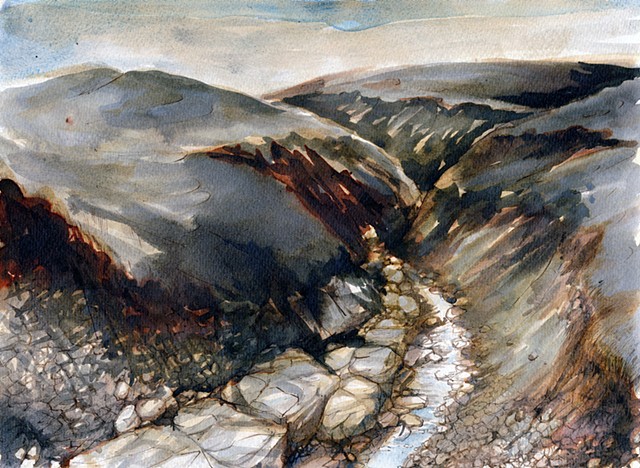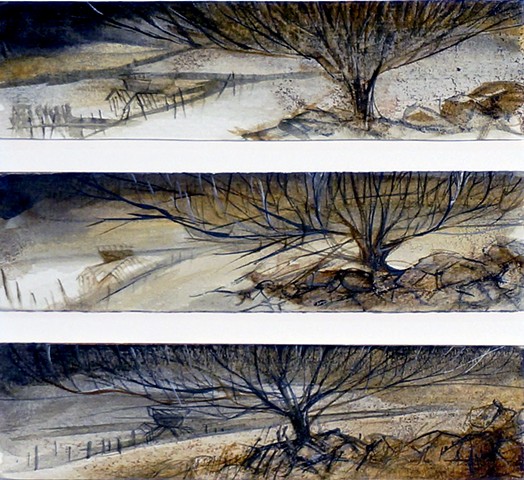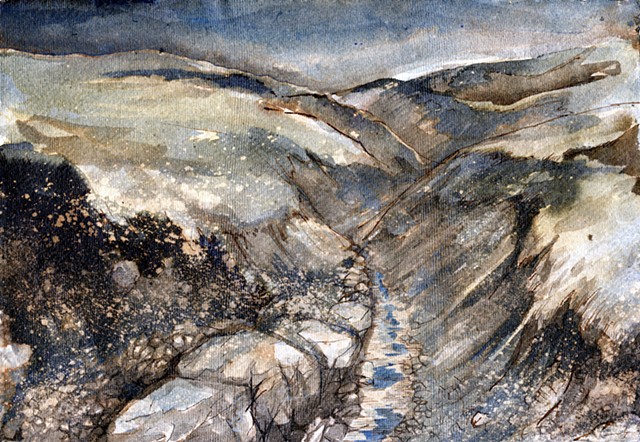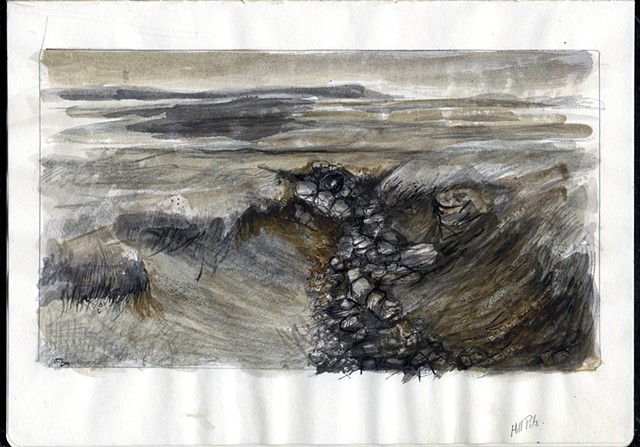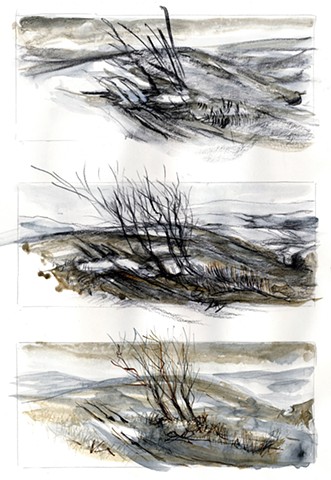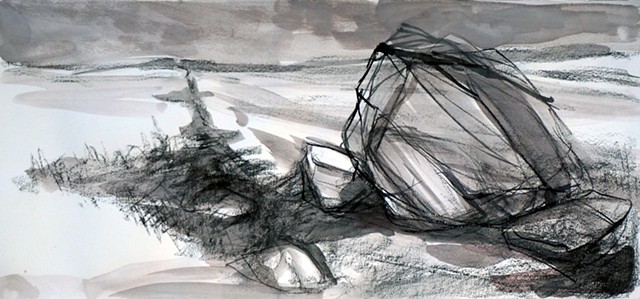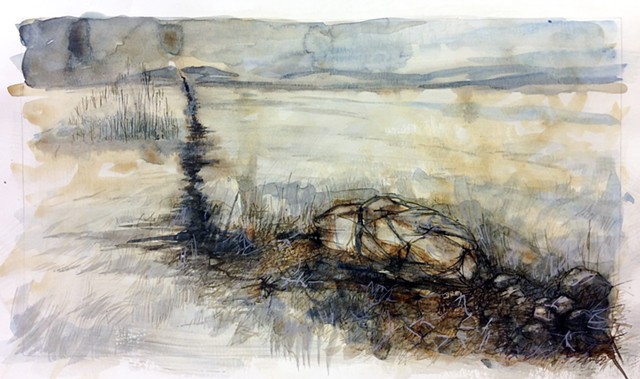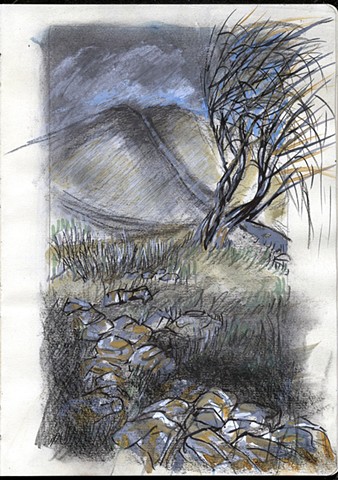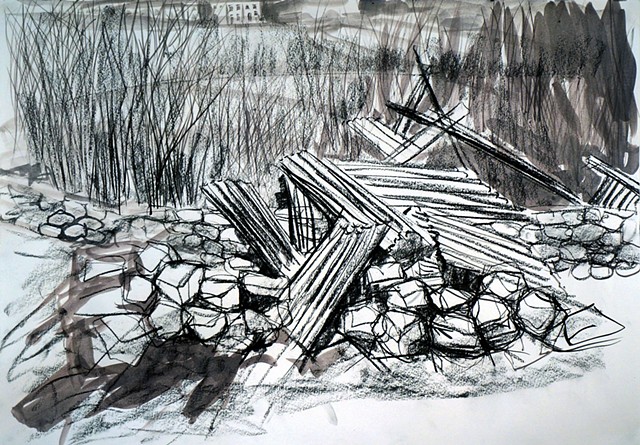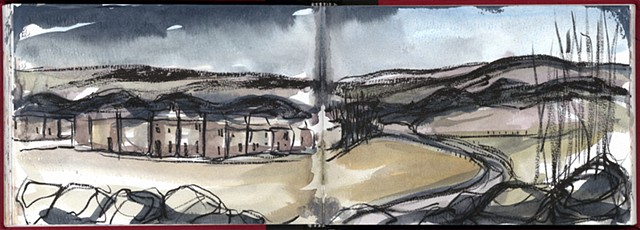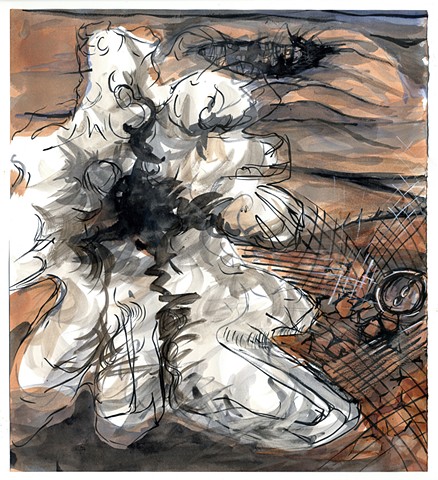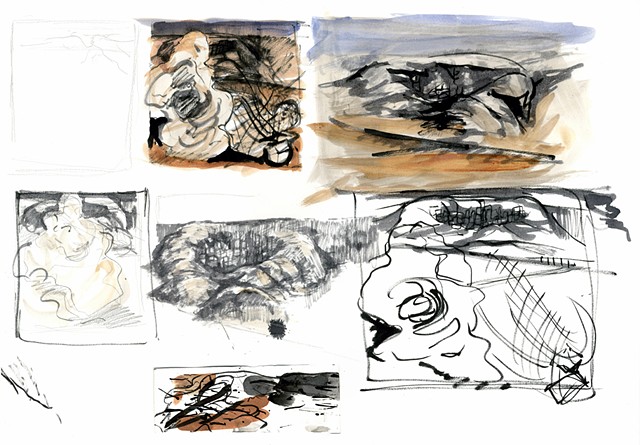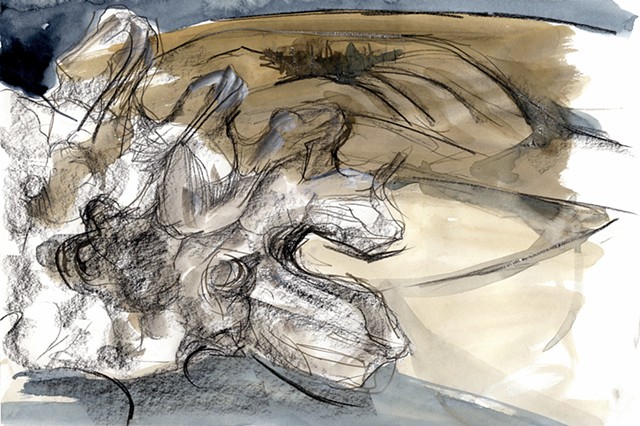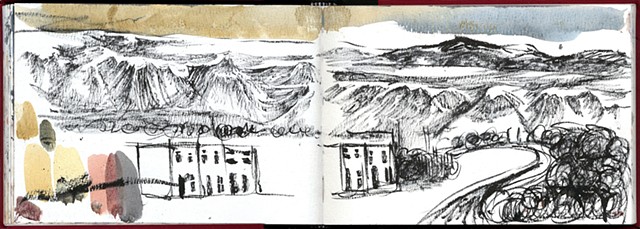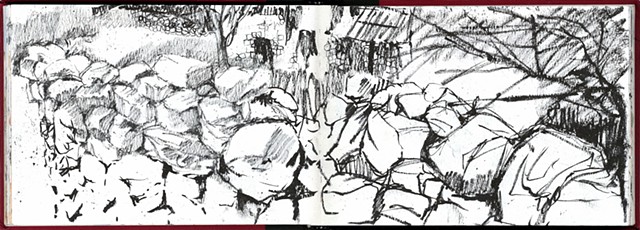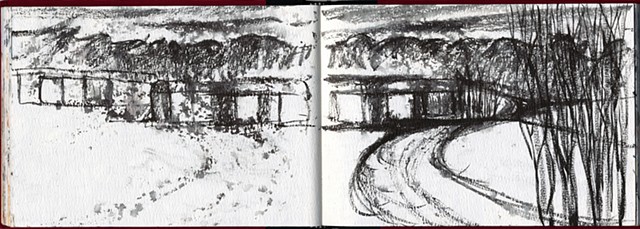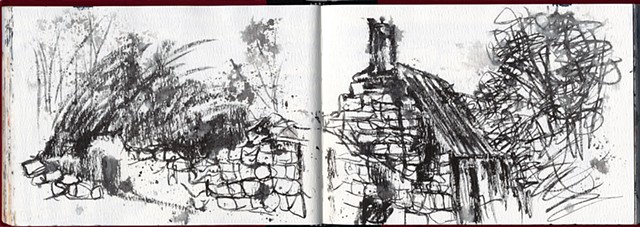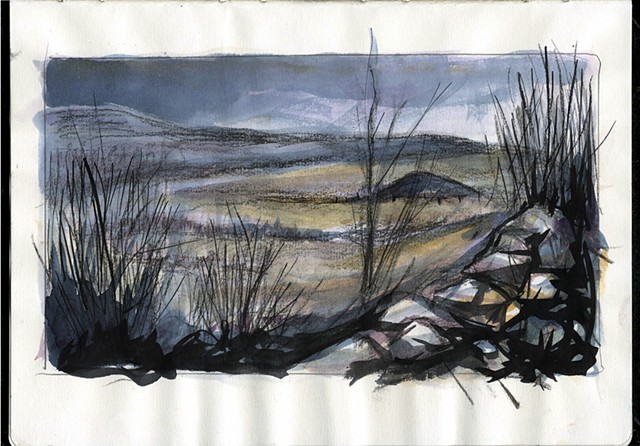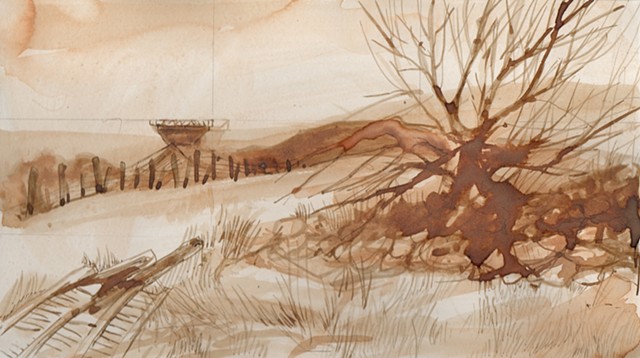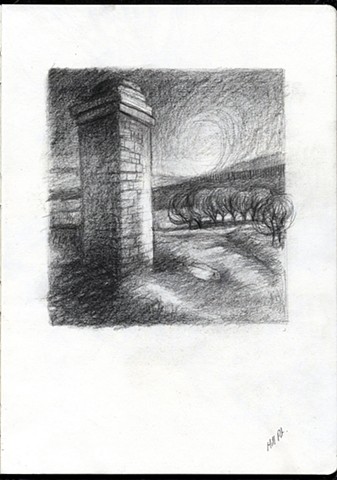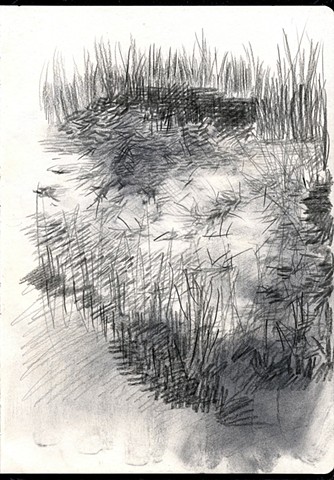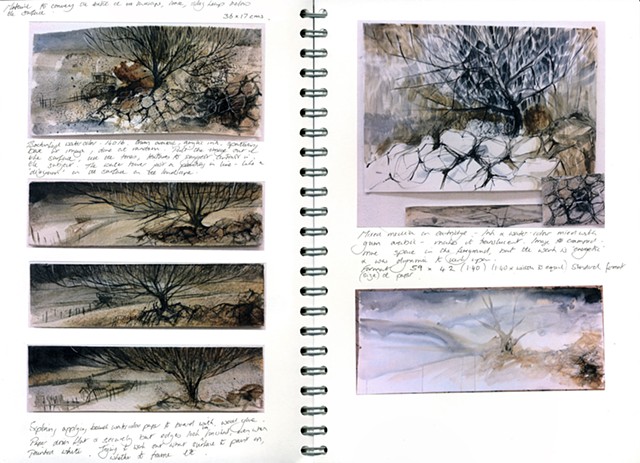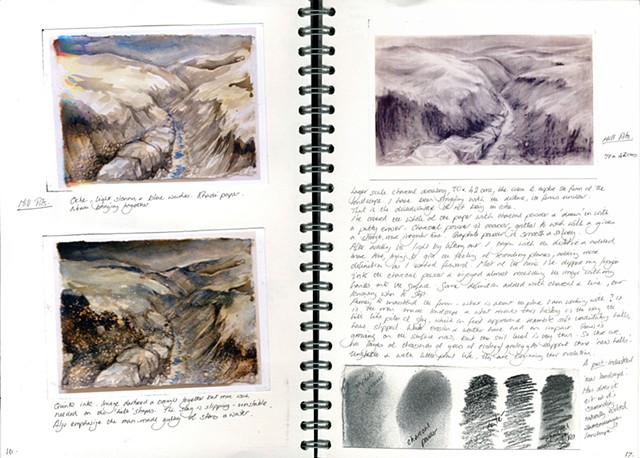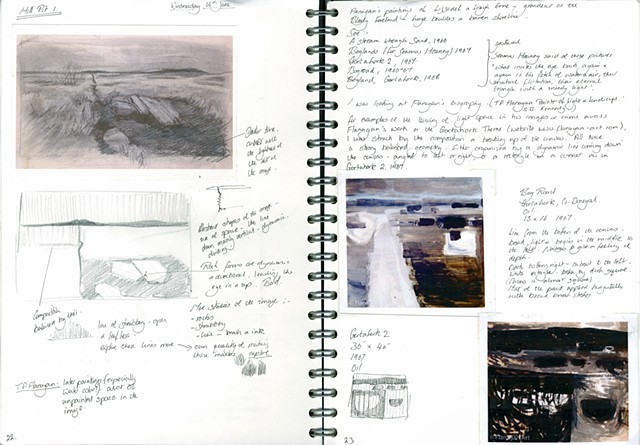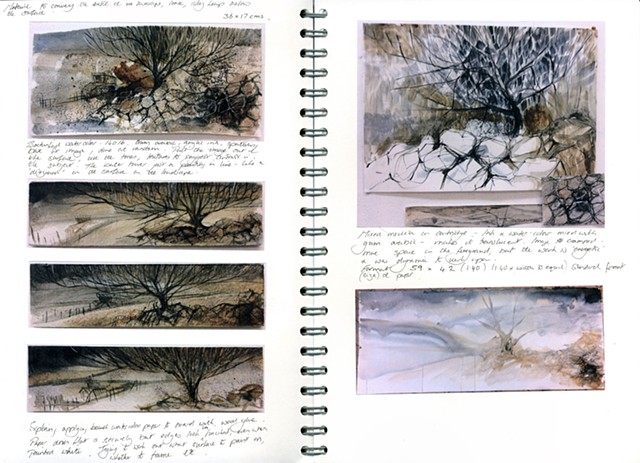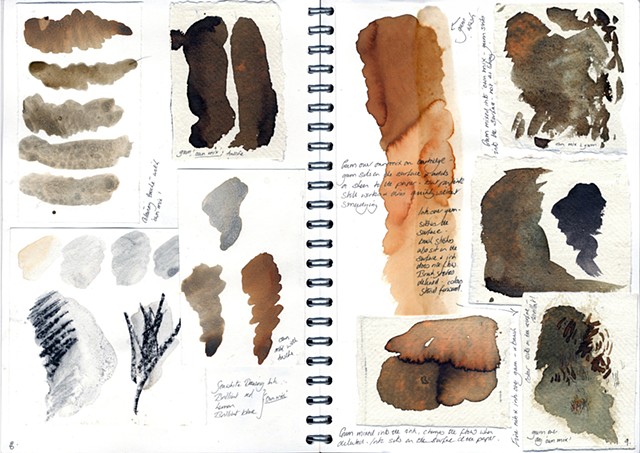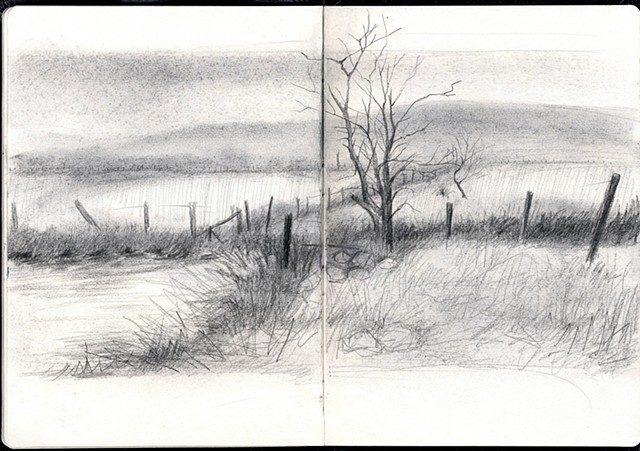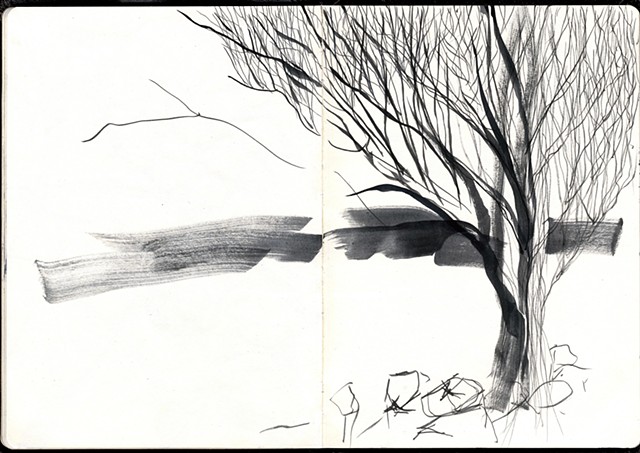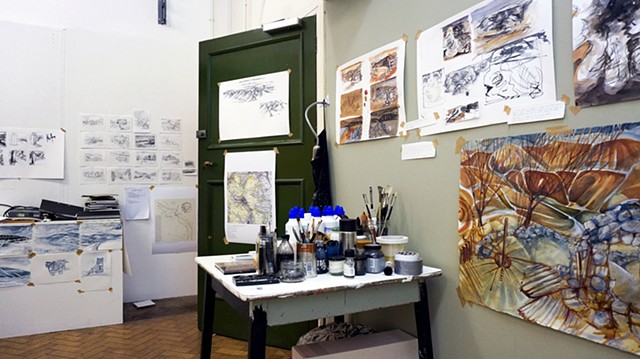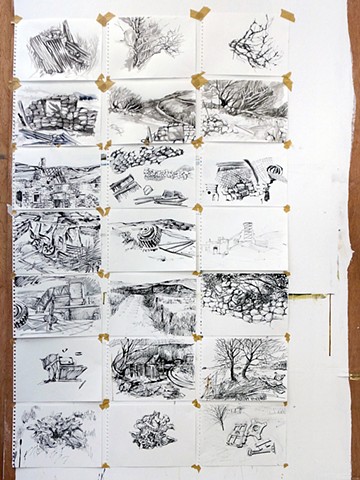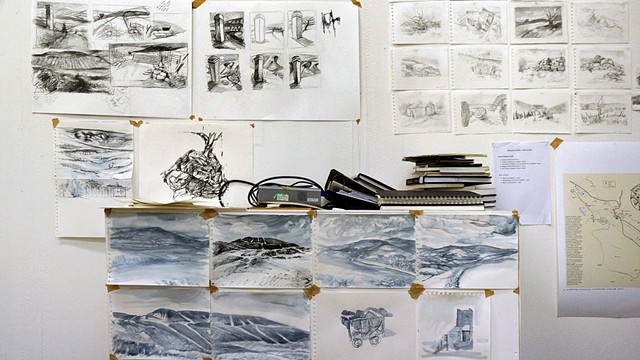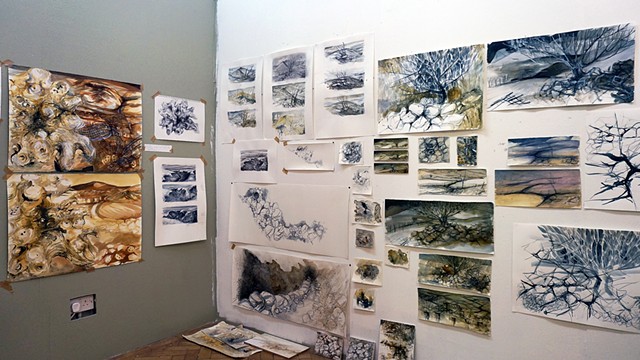THE ARCHAEOLOGICAL IMAGINATION
Judith Woodings | The Archaeological Imagination
The unknown is just as real as the known and must be made to look so.
Graham Sutherland
These new works investigate the legacy of the iron and mining industries on the Welsh landscape and the notion of the archaeological imagination. The paintings explore the folds and forms of the landscape; objects are veiled and thinly drawn on the surface with translucent colour to suggest a landscape that is transformed temporally. The archaeological imagination does not re-construct the past but sees the past in the present landscape. The post-industrial landscape of Blaenavon has been re-shaped and altered resulting in unnatural and lunar like forms. The remains of this industrial past can be examined as a core to understanding identity, both social and cultural.
These works juxtapose the rural and the post-industrial, with the discarded remains of industry standing like sculptural forms in a new context. They have become motifs of a previous age and appear incongruous and uncanny in such an industrial wilderness. My aim has been to recreate a world behind the ruin in the landscape and to reimagine the people behind the found remains. For instance, in the rural idyll of a tumbled down farmhouse at Coity Farm, the crumbling stone walls are partly constructed from Bessemer bricks that originate from a pig iron furnace. Similarly, farm gate supports were once iron pit props and railway sleepers. These objects appear discordant and serve to envision a place in flux.
In this newly shaped landscape, formed by a once burgeoning industry, slag heaps are moulded into unnatural hill forms. Now disguised and re-naturalised with thinly rooted grasses, they still remain unstable as the black coal dust frequently reveals itself through slippage. A recent industrial age lies just below the surface and is barely concealed. The archaeological imagination is rooted in such a sensibility; a reimagined approach toward traces and remains, about memory, time and temporality, and the fabric of history.
